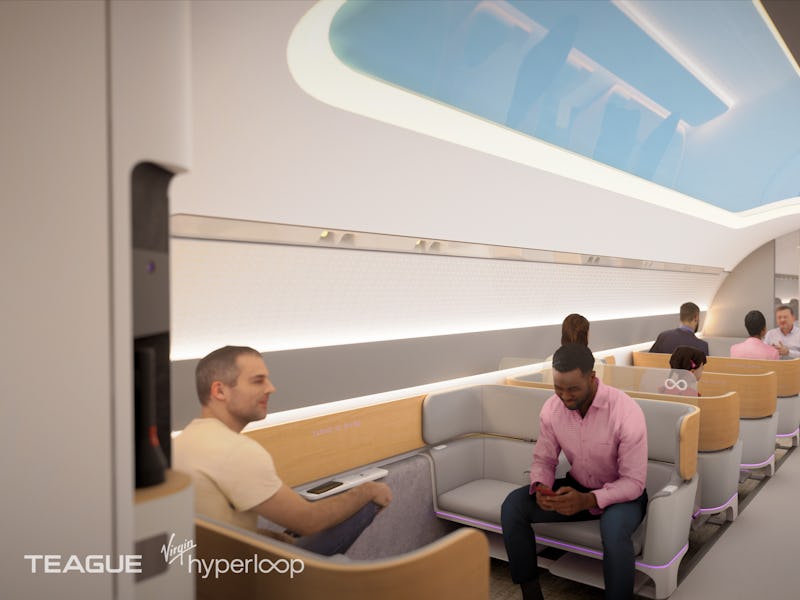Virgin Hyperloop: incredible video shows how people will ride 700 mph tube
The futuristic pod transit system has taken a step forward, following its successful passenger test.

Virgin Hyperloop has released a concept video of its futuristic transport system in action, and it looks out of this world.
The company is building on Elon Musk's white paper, first released in 2013, which details a vacuum-sealed pod transit system that can move passengers and cargo at speeds of over 700 mph. On Wednesday, the firm shared footage of how passengers will board these pods, sit back for the ride, and depart at the final stop.
Want to hear from Virgin Hyperloop's co-founder on when you will ride the hyperloop, how the first test paves the way for future trips, and what a hyperloop-enabled future could look like? Read our exclusive interview with Josh Giegel, only on Musk Reads+.
The two-minute-40-second video opens with an aerial view of a hyperloop station, complete with an octopus-like array of tubes that flick out on either side.
Each pod is expected to hold 28 passengers, so this design enables one station to ferry far more people at once by hosting multiple pod boarding gates.
Virgin Hyperloop's system in action.
The footage shows someone booking a seat with less than five minutes to go before departure. They move through an oval-shaped great hall to find their gate (E2) and seat (3a).
The hall as depicted.
The attendant lets the passenger through with just three minutes to spare — seemingly much faster than airport security.
The pods in action.
During the trip, passengers can sit back, watch their journey's progress, wirelessly charge their phone and chat with passengers. There'll be no train-style cow spotting: neither the pods nor their tubes have any windows.
Virgin Hyperloop's pod station.
Important to note is how the pods form a group inside the tube, peeling off to reach certain destinations. This enables each pod to move directly to a destination with no intermediate stops while allowing for higher passenger density.
Virgin Hyperloop's pod interior.
The footage was produced in collaboration with a number of partners. The portal designs were produced by Bjarke Ingels Group, the pod designs by Teague, the video and animation by SeeThree, and the audio score by Man Made Music.
Virgin Hyperloop's pod station.
Virgin Hyperloop has taken big steps toward bringing hyperloop to life. Geigel and Sara Luchian, Virgin Hyperloop’s director of passenger experience, became the first people to ride on a hyperloop when they rode in the XP-2 pod in November 2020.
The test, hosted at the 1,640-foot "DevLoop" test track in the Nevada desert, only lasted for around 15 seconds and reached 107 mph, but it was an important milestone in hyperloop's development.
“Designing a new mode of transportation from scratch is both an opportunity and a responsibility,” Luchian said in a statement accompanying the video launch. “Hyperloop technology — and what it enables — is paradigm-shifting. It follows that the passenger experience should be nothing short of extraordinary.”
Virgin Hyperloop's tube interior.
The Inverse analysis — When Musk first unveiled the 2013 white paper, it received a number of criticisms. One main issue was whether it could match the passengers per hour of a high-speed train. Analysis by TRL suggested it could, but it was based on trains leaving every 30 minutes and hyperloop pods leaving every 113 seconds.
Virgin Hyperloop's video shows how the company wants to resolve the problem. The company explained in a statement that these fleets will use machine intelligence software to move pods behind each other within milliseconds. This would enable "thousands" of passengers per hour.
This is why a future test of its fleet software will be crucial. The firm is aiming for safety certification by 2025, and commercial operations by 2030. If all goes well, a future like the one shown in the video could be less than a decade away.
This article was originally published on